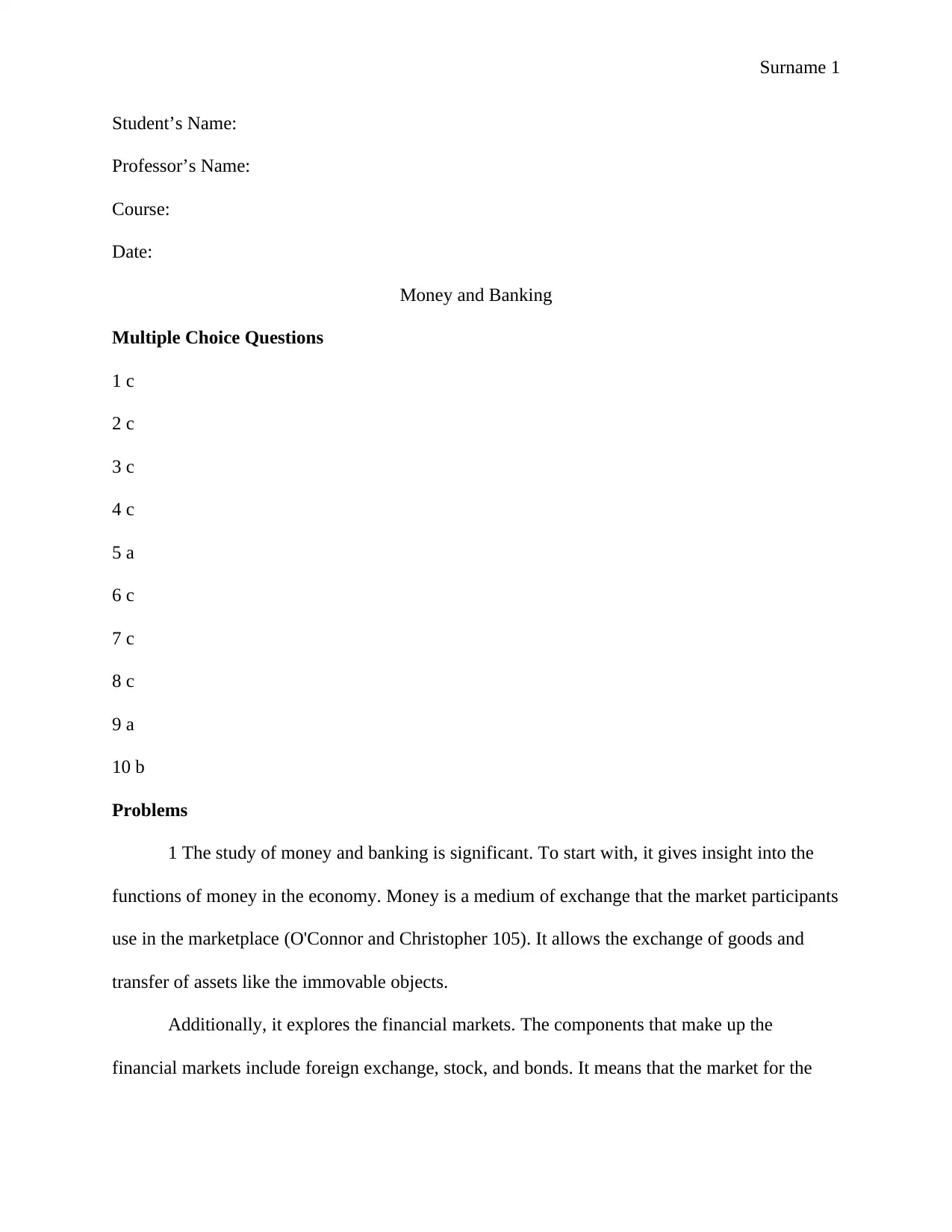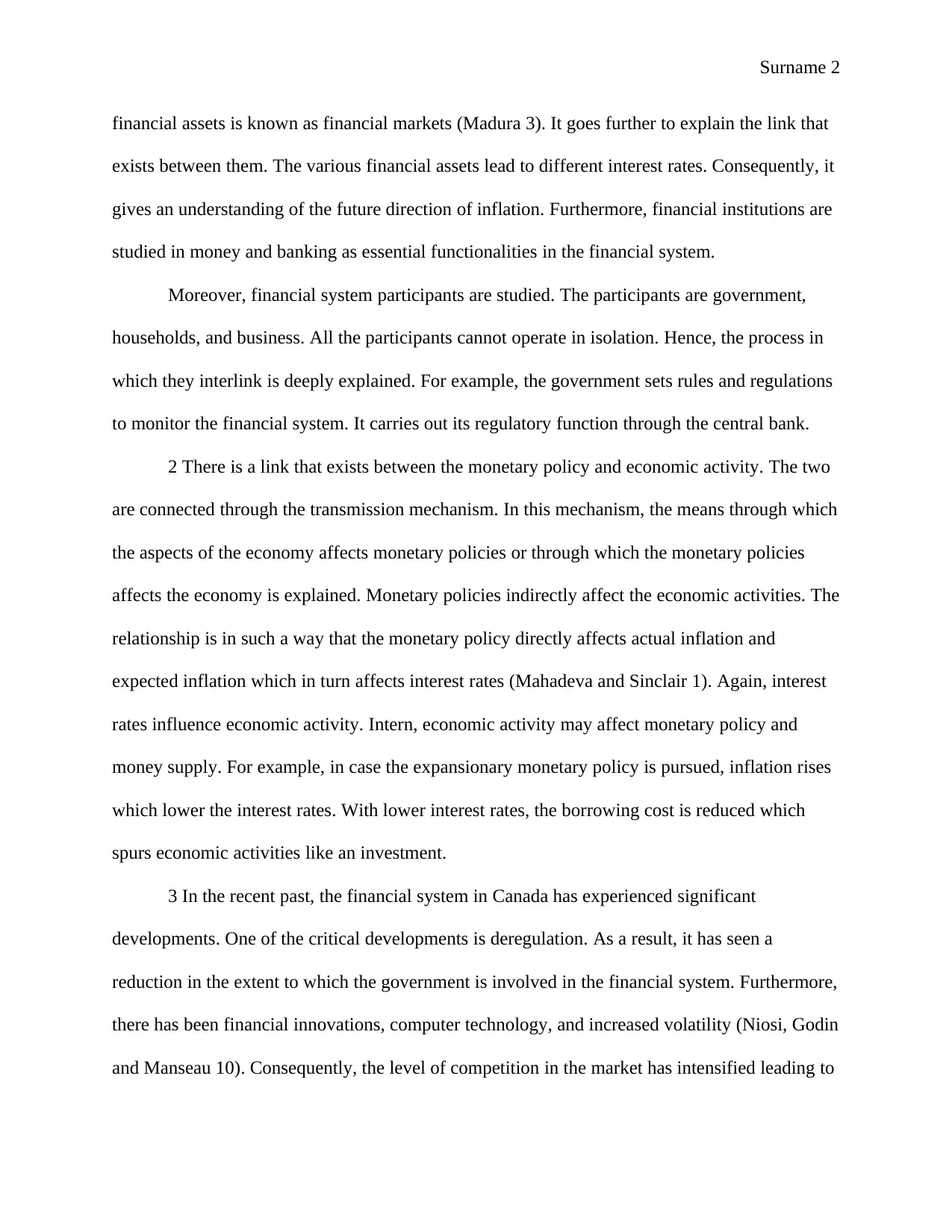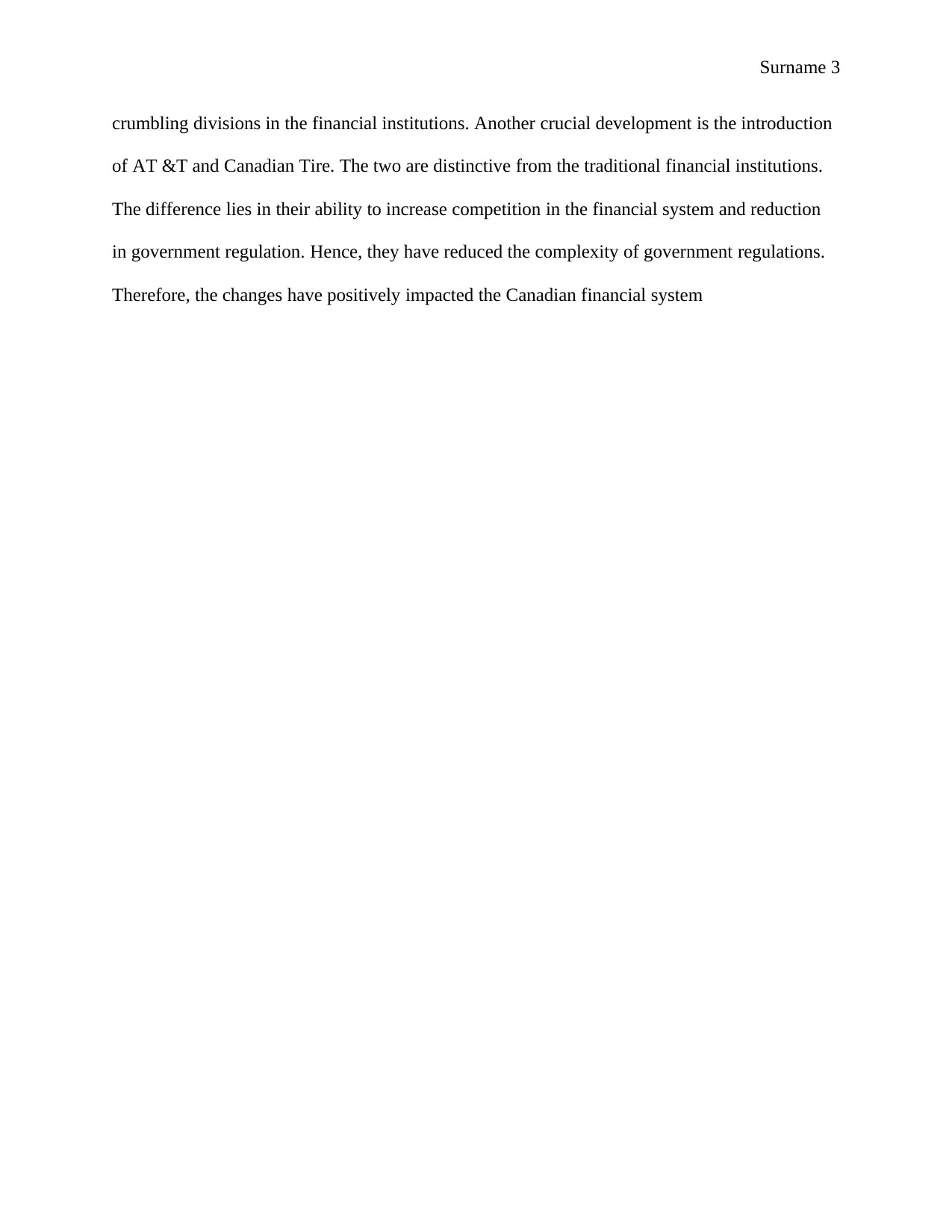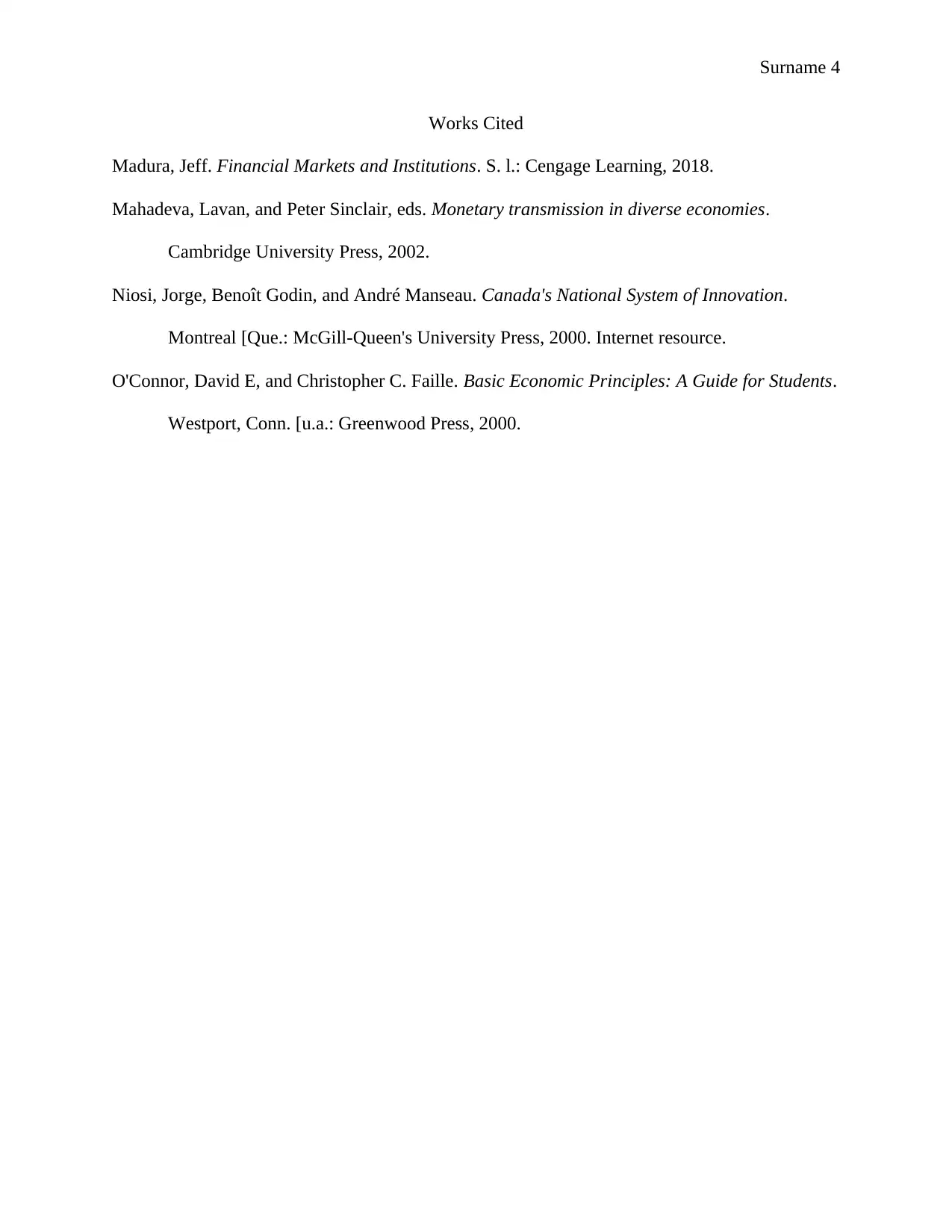Money, Banking, and Financial System: A Canadian Perspective
VerifiedAdded on 2023/06/10
|4
|674
|217
Homework Assignment
AI Summary
This assignment delves into the study of money and banking within the Canadian financial system. It emphasizes the significance of understanding money's role as a medium of exchange, the dynamics of financial markets (including foreign exchange, stock, and bond markets), and the interconnectedness of financial institutions, government regulations, and the behavior of various economic participants such as households and businesses. The assignment explores the relationship between monetary policy and economic activity, highlighting the transmission mechanism through which monetary policies influence inflation, interest rates, and ultimately, economic activities like investment. Furthermore, it discusses recent developments in the Canadian financial system, including deregulation, financial innovations, and the entry of non-traditional financial institutions, and how these changes have impacted the system's competitiveness and regulatory landscape. The document is available on Desklib, a platform offering study tools for students.
1 out of 4










![[object Object]](/_next/static/media/star-bottom.7253800d.svg)